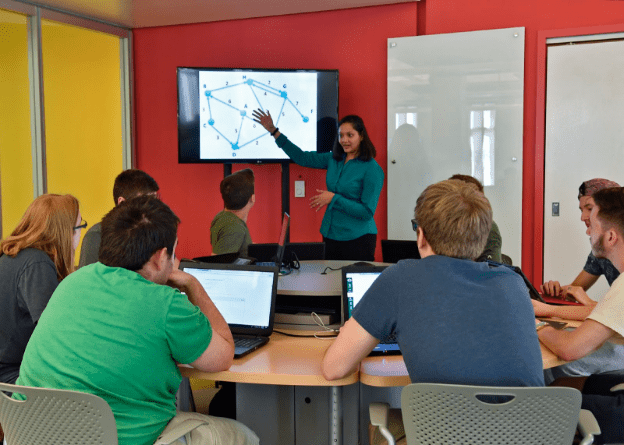CTL History
Supporting Excellence in Teaching and Learning for OVER 25 YEARS
Since its inception in January 1999, the Center for Teaching and Learning has offered a wealth of professional development opportunities for all instructors at UNC Charlotte. Those opportunities are wide-ranging in topic, scope, and impact. Our work ranges from supporting individual faculty with just-in-time solutions to supporting complex programs at the institutional level.

The Center for Teaching and Learning has a long history of innovative thinking and strategic alignment with university goals, going back to the fall of 1998, when Provost Denise Trauth recruited a faculty associate, Dr. Sallie Ives, to establish a teaching center to be launched in January 1999. Dr. Ives was the founding director and led the CTL until 2007, and the university owes her a great deal of credit for her tenacity and dedication to student success that led to the CTL’s creation.
Dating back to the mid-1980s, Dr. Ives had been part of a group of dedicated and forward thinking faculty at UNC Charlotte who had been requesting the creation of a formal teaching center to support them in their efforts to enhance teaching and learning. These faculty made up the Faculty Committee for Teaching Excellence, arranging faculty development activities on an ad hoc, volunteer basis. Faced with increasing pressures for faculty to greatly enhance their research activities and large enrollment increases, the idea of a one-stop faculty support center took hold at UNC Charlotte in the fall of 1998, when Provost Denise Trauth recruited Dr. Sallie Ives to establish the UNC Charlotte Faculty Center for Teaching.
When responsibility for enterprise academic technology was added to the CTL mission in 2001, this was relatively unheard of among university teaching centers: it was more typical for universities to create new and separate IT-focused support units instead. The Charlotte CTL model was so unique that it was featured in an EDUCAUSE report in 2005* (which is the basis for the early history given here), and the CTL was often referred to as a “combined unit” when speaking to other universities about our experiences as late as 2010 or slightly beyond. While other CTLs across the country have adopted many of these same practices and models since, Charlotte was an early leader in strategically placing academic technology under the umbrella of teaching excellence.
The ensuring years have seen many evolutionary changes in higher education, which Charlotte and the CTL have been ready to address, such as the rise of instructional technology, digital learning, and online learning moving from teaching enhancements to becoming mission critical to Charlotte’s success.
Throughout its history, the CTL at UNC Charlotte has been dedicated to fostering a culture of teaching excellence, providing faculty with professional development opportunities, and supporting their growth as educators. By adapting to changing pedagogical landscapes and embracing new technologies, the center has consistently aimed to enhance student learning experiences and contribute to the university’s academic success.
We take great pride in being part of a Charlotte teaching and learning community who still continue to push the boundaries of innovation to “shape what’s next!”
—
*The history above comes from Bridging the Divide: Combining Faculty Centers and Instructional Technology Support, Sallie Ives & Karin Steinbrenner, University of North Carolina at Charlotte, EDUCAUSE Center for Applied Research Bulletin, Vol 2005 Issue 9, April 26, 2005